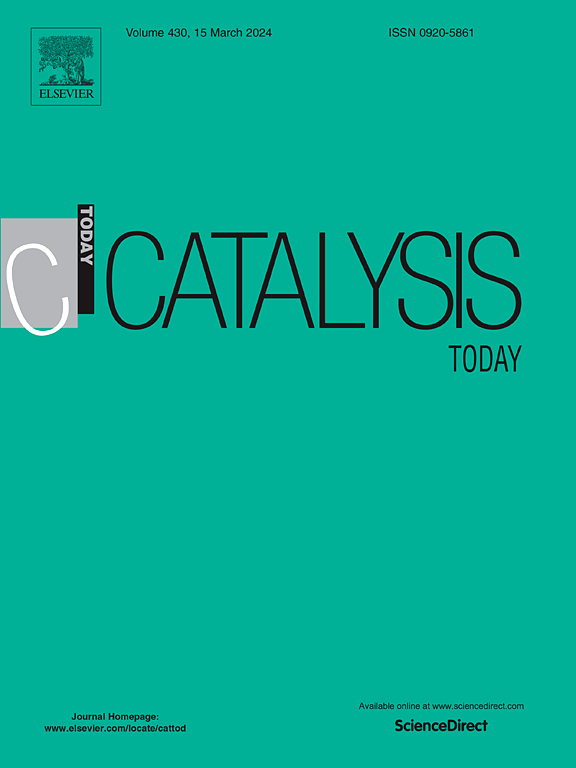Enhanced photo/electrocatalytic efficiency of Zn-decorated TiO2 nanostructures for sustainable hydrogen evolution
IF 5.2
2区 化学
Q1 CHEMISTRY, APPLIED
引用次数: 0
Abstract
Monophasic 1, 2.5, and 5 % Zn-decorated TiO2 nanocatalysts have been fabricated by environmentally benign hydrothermal synthesis by avoiding expensive chemicals. As- prepared nanostructures have been investigated utilizing various sophisticated instruments like XRD, scanning and transmission electron microscopy, EDAX, Raman, optoelectronics as well as BET Surface Area studies. 2.5 % Zn- decorated TiO2 was found to have superior photocatalytic performance, exhibiting an H2 formation of 25.55 mmol in 8 hours and average H2 generation of 3.15 mmolh−1 at 170 W light intensity. Additionally, electrochemical investigations showed that 5 % and 2.5 % Zn-doped TiO2 had a higher cathodic and anodic current density of 10 mA/cm2 at −0.95, indicating that it has a higher HER catalytic activity, respectively. The synergistic impact of pristine TiO2 and Zn-incorporated TiO2 nanocatalysts is responsible for the increased kinetics of H2 evolution, as it increases the separation and transfer of photo-charged (e-/h+ pair) carriers and decreases redox potential for HER.
提高锌装饰 TiO2 纳米结构的光催化/电催化效率,实现可持续氢气进化
单相 1%、2.5% 和 5% 镀锌二氧化钛纳米催化剂是通过无害环境的水热合成法制造的,避免了昂贵的化学品。制备的纳米结构利用各种精密仪器进行了研究,如 XRD、扫描和透射电子显微镜、EDAX、拉曼、光电子学以及 BET 表面积研究。研究发现,2.5 % Zn- 装饰的二氧化钛具有优异的光催化性能,在 170 W 光强下,8 小时内可生成 25.55 mmolgcat-1 的 H2,平均 H2 生成量为 3.15 mmolgcat-1h-1。此外,电化学研究表明,掺杂 5 % 和 2.5 % Zn 的 TiO2 在-0.95 时的阴极和阳极电流密度分别为 10 mA/cm2,表明其具有更高的 HER 催化活性。原始 TiO2 和掺杂 Zn 的 TiO2 纳米催化剂的协同作用是提高 H2 演化动力学的原因,因为它增加了光带电(e-/h+ 对)载流子的分离和转移,降低了 HER 的氧化还原电位。
本文章由计算机程序翻译,如有差异,请以英文原文为准。
求助全文
约1分钟内获得全文
求助全文
来源期刊

Catalysis Today
化学-工程:化工
CiteScore
11.50
自引率
3.80%
发文量
573
审稿时长
2.9 months
期刊介绍:
Catalysis Today focuses on the rapid publication of original invited papers devoted to currently important topics in catalysis and related subjects. The journal only publishes special issues (Proposing a Catalysis Today Special Issue), each of which is supervised by Guest Editors who recruit individual papers and oversee the peer review process. Catalysis Today offers researchers in the field of catalysis in-depth overviews of topical issues.
Both fundamental and applied aspects of catalysis are covered. Subjects such as catalysis of immobilized organometallic and biocatalytic systems are welcome. Subjects related to catalysis such as experimental techniques, adsorption, process technology, synthesis, in situ characterization, computational, theoretical modeling, imaging and others are included if there is a clear relationship to catalysis.
 求助内容:
求助内容: 应助结果提醒方式:
应助结果提醒方式:


